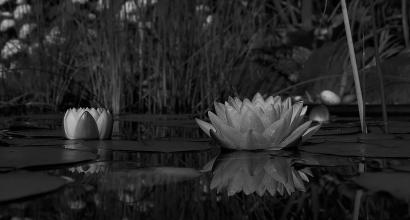My Request
Back in 1929, the government led by Sir Mirza Ismail constituted an advisory committee that was to give suggestions for bettering the political system. K.R. Srinivasa Iyengar, the former councillor, was the chair of the committee. I rendered a writing that objected the report prepared by the Committee. In my writing, I had said that the current government should give a statement that its main focus currently would be to form a responsible government (for the country); I had also indicated that there must be incremental development from year to year for about twenty years and as a result, it must lead to the formation of a fully responsible government. The report prepared by the committee, on the other hand, had totally dropped off all words regarding the formation of a responsible government. Mirza Ismail had no faith in such a formation. Thus, no one thought that my proposal would gain any approval.
A few of my friends, however, decided that the matter should not be dropped that easily. The main person behind this group of friends was Sampige Venkatapatayya.
A Plan
Under these circumstances something interesting happened – the newspapers reported that it was likely that Mahatma Gandhi would be going to Delhi. Mirza Ismail was scheduled to go to Delhi for some other reason around the same time. My friends felt that these two men traveling to Delhi could be the right occasion to bring up the topic of a responsible government. Sampige Venkatapatayya heeded to the suggestion given by one Mr. A.B.C, who was close to Patel back then. The suggestion was the following: I was to reduce to about two pages my writing on the difference of opinion that I have with the committee. The concise version of my views was to be handed over to Mahadeva Desai, Gandhiji’s secretary by Mr. A.B.C. Desai was to read the letter, understand it in all its thoroughness and bring it to Gandhiji’s notice in an appropriate manner. The Mahatma was to persuade Sir Mirza Ismail for a responsible government. Would Mirza not meet Gandhi when both of them were in Delhi at the same time? He would certainly meet Gandhi. The Mahatma will definitely convey his opinion to Mirza. This was for sure. Mirza is bound to listen to Gandhi’s words. This was the thought process.
A baka-pakshi indeed stands amidst a lake. If we go around carrying a ball of butter with us, we will certainly get it. If we are to place the ball of butter on the baka-pakshi’s head it is going to melt for sure. Once the butter melts and starts following down, it will certainly enter the baka’s eyes. Soon as the molten butter flows into its eyes, the baka bird will be perplexed and will stand not knowing what to do. That is when we can catch its throat on all accounts.
The Mahatma went to Delhi. The day before the Mahatma was to reach Delhi, Mirza left from there. We thought that Mirza would then go to Bombay and would meet the Mahatma there. Mirza never took the route through Bombay but instead reached Bangalore through the Voltaire path.
A 'Sub-plot' of Sorts
There was another set of dramatic events that took place during this illusionary phase. Mirza Ismail visited Madras and met many of his friends there. It looked like he brought up the topic of my effort before three men there. The three were
1. P.S. Shivaswami Iyer
2. V.S. Srinivasa Sastri
3. T.R. Venkatarama Sastri
The three wrote separate letters to me.
Shivaswami Iyer had asked me in the following manner – “Mirza and you seem to be at loggerheads with each other. He is a nice person. Why do you have to fight with him?”
Srinivasa Sastri wrote – “There is an accusation of you having switched sides from the Liberal Party to the Congress one. Is this true? You have given up association with a friendly party and have joined hands with the opposition. Is it so?”
Venkatarama Sastri: “Even if there are differences in views in political matters, is it necessary to hamper our personal relationships too by dropping old friendships?”
I wrote three separate replies to these stalwarts. All my replies were related to friendship. What kind of camaraderie did Mirza and I share? The two of us do not hail from the same town, we don’t belong to the same family, we weren’t classmates and we don’t share the same profession either. His place is atop an elephant, in the ambāri. My place, on the other hand, is on the ground – to walk without footwear. What kind of friendship can exist between two men with such diverse characteristics? I was under the illusion that Mirza might support the political cause that I hand in mind. He might have assumed that I will be of some assistance to him in his political agenda. Even when a man and a woman get attracted to each other and become a family, it is only after some time that she will realise that her man has a hunch back and he will notice that her back is dark in colour. He is then all to himself and she is to herself, disconnected from each other.
Shivaswami Iyer was a little troubled upon seeing my letter. He did not broach up the topic again with me. Venkatarama Sastri was not convinced. He wrote a letter criticizing me. I will now narrate Srinivasa Sastri’s reaction – that is the only thing relevant here.
Friendship reigns Supreme
Srinivasa Sastri agreed partly with what I had said. “I too have had similar experiences. During the times when there was trouble in Punjab, there were people who complained about me to the Viceroy and to his ministers. (After naming a few people) – These men benefitted from it. What can we do about it? Our own consciences are our emperors. We should never cheat this lord within us. If he causes us any harm, we will have to experience the pain.
“Yet, you should not rupture any friendship. There are several means to earn a livelihood other than being in the political sphere. Friendship is required, to have peace and coolness in the societal arena. Thus, we must never forget old friendships and retain personal relationships. We must further nourish and strengthen them.”
An incident that is connected with this preaching comes to my mind.
My Adamance
There was communal unrest between the Hindu and Muslim community in Sultanpet in 1928. There were two factions that surfaced during this period – one was that of the Hindus and the other of Muslims. These two later metamorphosed into Prajaa-paksha and Sarakaarada-paksha. Mirza thought that I belonged to the Prajaa-paksha, i.e., the Hindu unit. It started this way and led to further bitterness between us. I stopped visiting Mriza Ismail. He had even sent for me a couple of times through his friends but I did not go. Once, Navaratna Rama Rao told me: “Sir, let your politics remain the manner you wish them to be, I will not interfere there. But, the master has affection for you. He has brought dolls for your children from Bombay. Why don’t you visit him and fetch the gifts he has brought for you?” I refused to budge.
“I will then get the things for you (from Mirza Ismail). Take them.”
“That is not possible at any cost. Please forgive me."
It seemed like my friends had fed this story to Srinivasa Sastri’s ears.
To be continued...
This is the nineteenth part of the English translation of the Second essay in D V Gundappa’s magnum-opus Jnapakachitrashaale (Volume 6) – Halavaru Saarvajanikaru.











































